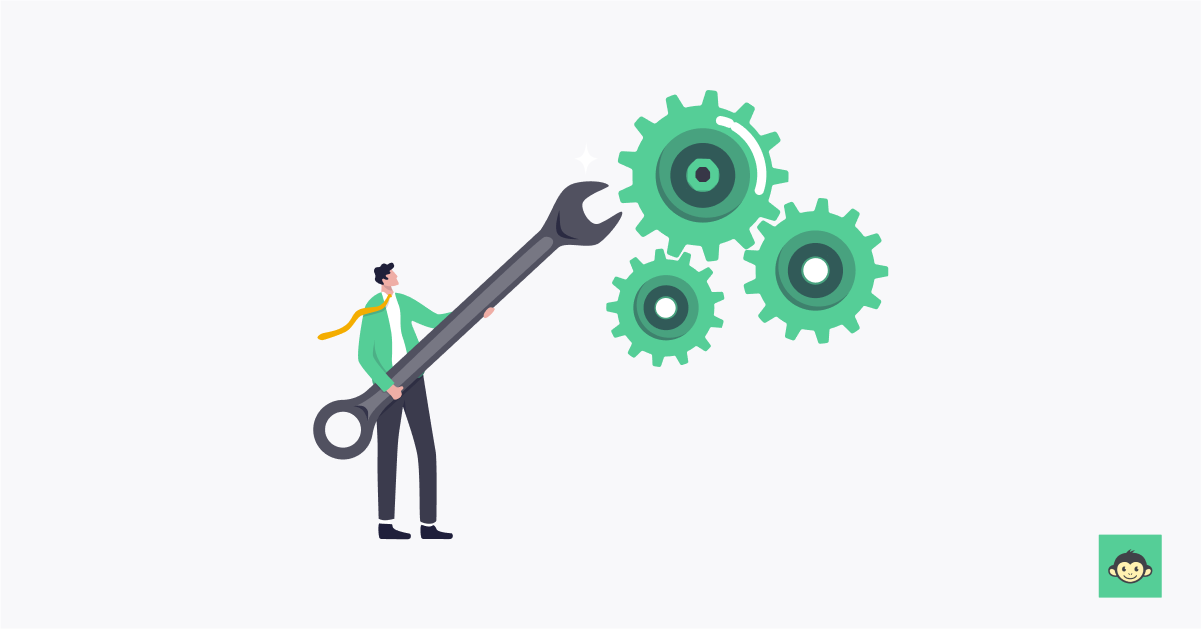What is a high-performance culture: A complete guide to creating a high-performing culture meaning

In the fast-paced landscape of today's business world, fostering a high-performance culture isn't just a buzzword.
Picture this: a workplace where every team member is not just present but passionately engaged in their tasks, where challenges are viewed as opportunities for growth and a performance-driven culture where success isn't a milestone but a way of life.
That's the promise and potential of a high-performance culture, and it's the game-changer you've been seeking to elevate your team's output and satisfaction. Join us as we unravel the intricacies of cultivating such a work culture that transcends the ordinary.
We'll delve into the strategies that transform workplaces into hubs of creativity and productivity, where employees don't just clock in and out but become champions of your organization's mission.
High-performance culture benefits

At its core, a high-performance culture is a catalyst for driving employee engagement to unprecedented levels.
Imagine a workplace where team members are not just contributors but enthusiastic participants, where everyone is aligned with the same organizational values and goals, and their passion fuels a collective drive toward success.
One of the key benefits lies in the remarkable boost to company performance and productivity. In a high-performance culture, employees are motivated to bring their A-game consistently, fostering an environment where efficiency becomes second nature. This heightened productivity doesn't just manifest in individual tasks; it permeates through collaborative efforts.
Moreover, a high-performance culture contributes significantly to talent retention. When employees feel a strong connection to their work and the overall mission of the organization, they are more likely to stay committed for the long haul.
This not only reduces turnover costs but also ensures a stable and experienced workforce, laying the foundation for sustained success.
Innovation becomes second nature in a high-performance culture, as team members are encouraged to think creatively, take calculated risks, and continuously seek ways to improve processes.
This not only keeps the organization ahead of the curve but also fosters a sense of pride among employees who see their ideas translate into tangible results.
7 Characteristics of a high-performance culture you should know

To identify whether your company has a truly high-performing culture-performance culture or is moving towards one, these are the characteristics you need to identify.
1. Clear vision and values
A high-performance organizational culture is built upon a foundation of a clear and compelling vision coupled with well-defined values. This clarity serves as a guiding light for all team members, aligning their efforts with the overarching goals and principles of the organization.
2. Open communication
Effective communication is a cornerstone of high-performance cultures. Teams openly share ideas, feedback, and information, fostering an environment where transparency is valued. This open dialogue encourages collaboration and ensures that everyone is on the same page, working towards common objectives.
3. Continuous learning and development
Embracing such a culture of continuous learning is pivotal. In high-performance environments, employees are encouraged and provided with opportunities to expand their skills, fostering a workforce that is adaptable, innovative, and always ready to embrace new challenges.
4. Accountability
A sense of individual and collective accountability is integral to high-performance cultures. Team members take ownership of their responsibilities and outcomes, understanding the impact of their contributions on the overall success of the organization.
5. Recognition and rewards
Acknowledging and celebrating achievements is a defining characteristic of high-performance cultures. Whether big or small, recognizing individual and team accomplishments reinforces a positive work environment and motivates employees to strive for excellence.
6. Adaptability and resilience
High-performance cultures thrive on adaptability and resilience in the face of change. Teams are equipped to navigate challenges with a positive mindset, viewing obstacles as opportunities for growth rather than insurmountable barriers.
7. Innovation and risk-taking
Encouraging a culture of innovation involves fostering an environment where calculated risk-taking is not only accepted but celebrated. High-performance cultures empower employees to think outside the box, experiment with new ideas, and contribute to a culture of continuous improvement.
How do you create a high-performing culture?

Creating a high-performing culture is a deliberate and strategic process that involves a combination of leadership, communication, and consistent actions. Here's a roadmap to guide you in building a culture that fosters excellence:
Define clear values and vision
Start by clearly defining the core values and vision of your organization. Communicate these principles consistently to ensure that every team member understands and aligns with the overarching purpose.
Lead by example
Leadership plays a pivotal role in shaping an organization's culture. Leaders should embody the values they preach, demonstrating a commitment to excellence, transparency, and continuous improvement. This sets the tone for the entire organization.
Establish open communication channels
Foster a culture of open communication where team members feel comfortable expressing ideas, concerns, and feedback. Regularly engage in two-way communication through team meetings, feedback sessions, and collaborative platforms to build trust and transparency.
Invest in learning and development
Prioritize learning and development opportunities for your team. Provide training programs, workshops, and resources that empower employees to acquire new skills and stay ahead of industry trends. A commitment to ongoing employee development and education enhances both individual and collective performance.
Set clear expectations and metrics
Clearly define expectations and key performance indicators (KPIs) for each role within the organization. When team members understand what is expected of them and how their performance will be measured, they are more likely to strive for excellence.
Implement recognition and rewards programs
Recognize and reward outstanding employee performance, to reinforce the desired behaviors. This can be through formal recognition programs, employee of the month awards, or even simple expressions of appreciation. Positive reinforcement encourages a culture of achievement.
Encourage collaboration and teamwork
Cultivate a collaborative environment where teamwork is encouraged. Foster cross-functional collaboration and emphasize the importance of collective success. Teams that work well together can achieve more than individuals working in isolation.
Promote a healthy work-life balance
Acknowledge the importance of work-life balance to prevent burnout and maintain a positive workplace culture. Encourage breaks, flexible working arrangements, and initiatives that support the overall well-being of empowering employees and your team members.
Embrace innovation and risk-taking
Create a space where innovation is not only welcomed but expected. Encourage employees to take calculated risks and explore new ideas. A culture that embraces innovation is one that continuously evolves and stays ahead of the competition.
Regularly evaluate and adjust
Continuously assess the effectiveness of your company's culture and initiatives. Collect feedback from employees, measure performance against goals, and be willing to adapt strategies as needed. A high-performing culture is dynamic and requires ongoing attention and adjustment.
Best tools for a high-performance culture

Creating and sustaining a high-performance culture often involves leveraging tools that streamline communication, foster collaboration, and enhance productivity. Here are four top tools to fuel a high-performance culture:
- Slack: Communication is the lifeblood of any high-performance culture, and Slack is a powerhouse in this realm. It provides real-time messaging, file sharing, and collaboration features, creating a dynamic platform for team communication.
- Trello: For effective project management and task tracking, Trello is a go-to tool. Its intuitive interface allows teams to create boards, lists, and cards to organize and prioritize tasks. Trello promotes transparency, enabling team members to visualize the workflow, assign tasks, and monitor progress easily.
- CultureMonkey: To measure and analyze employee engagement and feedback, CultureMonkey is a powerful platform. It enables organizations to gather employee feedback through surveys, assess the employee experience and sentiment, and identify areas for improvement. With analytics and actionable insights, CultureMonkey helps leaders make informed decisions to strengthen the company culture and performance.
- JIRA: JIRA, developed by Atlassian, is a robust tool for agile project management and issue tracking. Ideal for software development teams, JIRA helps break down complex projects into manageable tasks, track progress, and facilitate collaboration. Its customizable workflows and reporting features enhance team efficiency and accountability.
Why continuous employee feedback is essential for creating a high-performance culture

Continuous employee feedback is the lifeblood of a high-performance culture, acting as a catalyst for growth, innovation, and sustained success. Unlike traditional annual reviews, regular feedback fosters a dynamic and responsive workplace where employees are empowered to adapt and improve performance in real-time.
This ongoing dialogue not only strengthens the employee-manager relationship but also provides valuable insights into individual and team performance.
In the high-stakes world of business, the ability to pivot swiftly is crucial. Continuous feedback identifies strengths to be celebrated and areas for improvement, guiding employees toward excellence. Moreover, it instills a sense of accountability and ownership, aligning individual goals with organizational objectives.
This iterative feedback loop not only enhances professional development but also cultivates a culture of openness, transparency, and collaboration, where every team member plays a vital role in the collective pursuit of success.
5 High-performance culture examples to get inspiration from in 2024

Here are the top examples of a great high-performance culture in the biggest organizations we know of.
1. Netflix: A culture of freedom and responsibility
Netflix has long been recognized for its unique high-performance culture, emphasizing freedom and responsibility.
The company trusts its employees to make decisions and encourages risk-taking. With a focus on hiring and retaining top talent, Netflix fosters an environment where innovation thrives and employees feel
2. Zoom Video Communications: Nimble and adaptable culture
As a key player in the remote communication space, Zoom exemplifies a high-performance culture through its nimbleness and adaptability.
The company's ability to respond quickly to changing market demands and innovate in real-time showcases a culture that values agility, continuous improvement, and a proactive approach to challenges.
3. Spotify: Agile and collaborative work environment
Spotify embraces an agile and collaborative culture that encourages cross-functional teamwork and creative thinking.
With a strong emphasis on autonomy and innovation, employees are empowered to explore new ideas, contributing to a dynamic environment where the company stays ahead in the competitive music streaming industry.
4. Microsoft: Growth mindset and inclusivity
Microsoft has fostered a high-performance culture by embracing a growth mindset. The company encourages continuous learning, resilience in the face of challenges, and a focus on individual and collective improvement. Additionally, Microsoft places a strong emphasis on inclusivity, recognizing that diverse perspectives fuel innovation and success.
5. HubSpot: Culture of transparency and customer-centricity
HubSpot's high-performance culture revolves around transparency and a relentless focus on customers. The company values open communication, sharing both successes and challenges across teams. This commitment to transparency extends to customer relationships, ensuring that teams are aligned in delivering exceptional value and service.
Conclusion
In the dynamic landscape of 2024, the pursuit of a high-performance culture stands as a paramount goal for organizations aspiring to thrive in an ever-evolving business environment.
From industry giants like Netflix and Microsoft to innovative disruptors like Zoom and Spotify, the blueprints for success vary, yet they all share a commitment to core principles that drive excellence.
The significance of continuous employee feedback, open communication, and a values-driven approach cannot be overstated. As we draw inspiration from these exemplars, it's evident that a high-performance culture is not a one-size-fits-all concept but a tailored journey, reflecting the unique identity and aspirations of each organization.
In this era of unprecedented challenges and opportunities, the companies that prioritize innovation, inclusivity, adaptability, and employee well-being are the ones propelling themselves toward sustained success.
The tools, strategies, and cultures highlighted in this exploration serve as beacons for those on a quest to cultivate environments where individuals and teams not only meet but exceed expectations.



